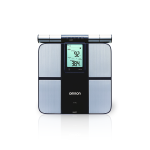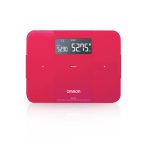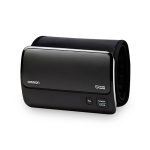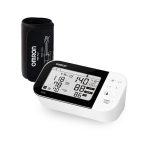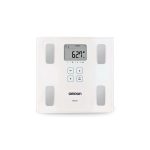Common Mistakes to Avoid When Using a Blood Pressure Machine
September 1, 2023 2024-01-25 18:01Common Mistakes to Avoid When Using a Blood Pressure Machine
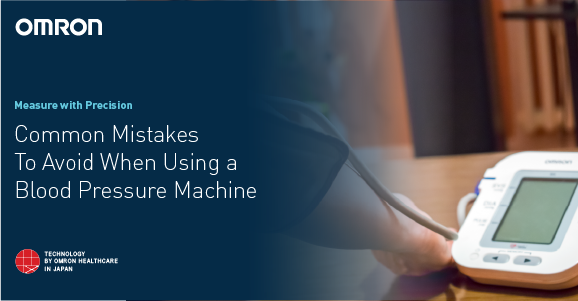
Common Mistakes to Avoid When Using a Blood Pressure Machine
Monitoring your blood pressure at home has become increasingly popular and accessible with the advent of digital blood pressure machines. It allows individuals to keep track of their cardiovascular health more conveniently. A blood pressure machine can give you accurate readings for your blood pressure level.[1]
This blog will discuss common mistakes to avoid when using a blood pressure machine to ensure accurate and reliable readings.
-
Choosing the Wrong Cuff Size
One of the most crucial factors in obtaining accurate blood pressure readings is selecting the appropriate cuff size. An incorrectly sized cuff can result in too high or too low readings. To determine the right cuff size, measure the circumference of your upper arm and choose a cuff that fits within the recommended range specified in the machine’s instructions. If your arm circumference falls between two sizes, opt for the more oversized cuff to avoid compression or improper sealing off the cuff during measurement.[2]
-
Poor Arm Positioning
The position of your arm during blood pressure measurement can significantly affect the accuracy of the reading. To ensure precise results, follow these guidelines:
- Sit in a chair with your feet flat on the floor and your back supported.
- Rest your arm on a flat surface, such as a table, with your upper arm at heart level.
- Ensure that the cuff is at the same level as your heart for accurate measurements.
- Do not cross your legs, which can alter blood flow and affect readings.
-
Talking or Moving During Measurement
Movement and conversation can interfere with blood pressure measurements. It’s essential to stay quiet while the machine takes your blood pressure. Talking or fidgeting can raise your blood pressure temporarily, leading to inaccurate results. Find a quiet and comfortable place to sit and take a few minutes to relax before starting the measurement.
-
Not Emptying Your Bladder
A full bladder can affect blood pressure readings, potentially leading to higher readings than usual. Before taking your blood pressure, using the restroom to empty your bladder is good practice. This can help ensure that the measurement is not influenced by bladder pressure.[3]
-
Improper Cuff Placement
The cuff should be placed correctly on your upper arm for accurate readings. The center of the cuff should align with the artery marker on the machine. If the cuff is loose and positioned too high or low on your arm, it can lead to inaccurate results. Always refer to the machine’s instructions for proper cuff placement.
-
Inadequate Rest Before Measurement
Stress, physical activity, and caffeine consumption can temporarily elevate your blood pressure. It’s advisable to rest for at least 5-10 minutes before checking your blood pressure to allow your body to return to a baseline state. Avoid taking your blood pressure right away after engaging in strenuous exercise or going through a stressful event as this could produce unnaturally high readings.[4]
-
Ignoring the Importance of Consistency
Consistency in blood pressure measurement is essential for tracking changes over time. To account for daily variations, measure your blood pressure at the same time each day, preferably in the morning or evening. Use the same arm and cuff size for each measurement and avoid changing measurement methods frequently. Consistency will help you identify trends and make informed decisions about your cardiovascular health.
-
Neglecting to Record Readings
Recording your blood pressure readings is essential for keeping track of your health and communicating with your doctor. Many digital blood pressure machines have built-in memory functions, but it’s also good practice to maintain a manual record. Include the date, time, and relevant notes, such as medication changes or unusual circumstances, to provide a comprehensive picture of your blood pressure trends.
-
Overreliance on Home Measurements
While home blood pressure monitoring is a valuable tool for managing your health, it should not replace regular check-ups with your healthcare provider. Your doctor can assess your overall health, recommend appropriate treatment, and verify the accuracy of your home measurements. Always consult your healthcare provider if you have concerns about your blood pressure or notice significant fluctuations in your readings.
-
Failing to Check the Machine’s Accuracy
Blood pressure machines can lose accuracy over time or due to wear and tear. It’s essential to check the accuracy of your device periodically. You can compare your home measurements to those at your healthcare provider’s office. Consider having your machine calibrated or replaced if there is a significant discrepancy between the two.
Omron’s commitment to innovation and user-friendly design makes it a popular choice for individuals monitoring their blood pressure at home. When using an Omron blood pressure monitor, it’s essential to follow the recommended guidelines and avoid common mistakes to achieve the most accurate results for better cardiovascular health management.[5]
Wrap-Up
Correctly using a blood pressure machine is essential for obtaining accurate and reliable readings. You can use your blood pressure machine to manage your health efficiently if you follow the advice outlined above and communicate with your healthcare practitioner. Remember that maintaining a healthy lifestyle, including a balanced diet and regular exercise, is crucial in managing your blood pressure and cardiovascular health.
Reference:
- https://www.heart.org/en/health-topics/high-blood-pressure/understanding-blood-pressure-readings/monitoring-your-blood-pressure-at-home
- https://www.everydayhealth.com/hypertension/why-blood-pressure-cuff-size-matters/
- https://www.ncbi.nlm.nih.gov/pmc/articles/PMC3383137/
- https://www.ncbi.nlm.nih.gov/pmc/articles/PMC8101832/
- https://www.omronbrandshop.com/blood-pressure-monitors/

